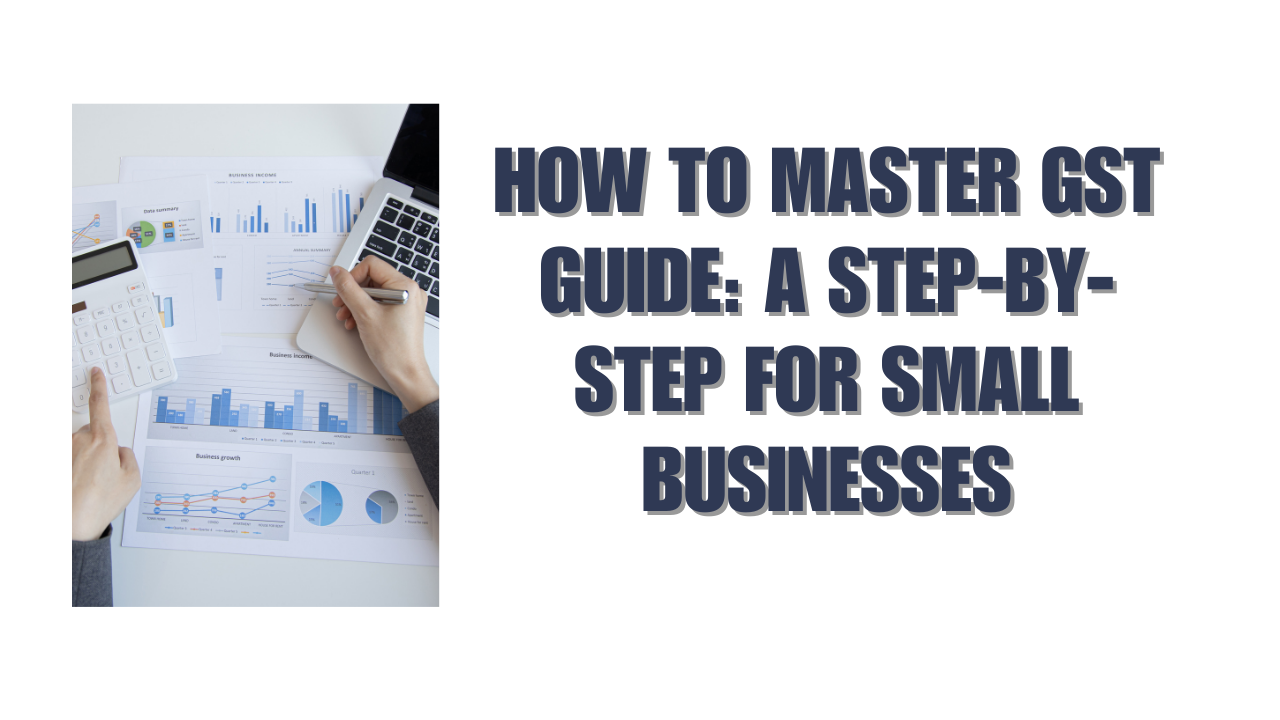Your business revenue could take a 15% hit if you misunderstand New Zealand’s GST system. This standard GST rate applies to most goods and services throughout the country.
Small business owners often struggle with GST compliance. The challenge becomes real when their turnover approaches the NZD 60,000 threshold for mandatory registration. The GST landscape has evolved since 1985, and businesses have adapted to changing obligations. New updates took effect in April 2023.
This detailed GST guide will help you direct everything from registration to filing returns. We’ll walk you through each step of the process, whether you’re new to business or want to improve your GST management.
Ready to get better at handling your GST obligations? Let’s get started!
Understanding GST Basics in New Zealand
GST is a vital part of New Zealand’s taxation system that affects businesses of all sizes. A simple grasp of its fundamentals will help you manage your obligations better and save money through proper handling.
What is GST and how it works
GST is a consumption tax that adds to the price of most goods and services in New Zealand. The current rate stands at 15%, and this tax applies to most business transactions, including imported goods and some imported services.
The GST system works like a value-added tax that registered businesses collect for the government. Business owners collect GST from customers and pay it to suppliers. Each filing period requires a calculation of the difference between:
- GST collected from customers
- GST paid to suppliers
The difference goes to Inland Revenue if collections exceed payments. A refund comes your way if you’ve paid more GST than you’ve collected.
Who needs to register for GST
Your business must register when its turnover from taxable activities hits or goes beyond NZD 102,336.62 in any 12-month period. The same rule applies if you expect to cross this threshold in the next 12 months. You must also register if your prices include GST, whatever your turnover might be.
Registration needs your business to run a “taxable activity” – one that keeps going continuously or regularly and involves providing goods or services to others for payment.
Smaller businesses below the threshold can opt for voluntary registration. This makes sense if you have big business expenses since you can claim back the GST portion.
GST rates and exemptions explained
The standard 15% rate covers most goods and services, but some supplies get special treatment:
Zero-rated supplies (0% GST):
- Exported goods
- Sales of going concerns (businesses sold as operational)
- Sales of land (under specific conditions)
Zero-rated supplies carry a 0% GST rate but still count as taxable activities. This lets you claim GST on related expenses.
Exempt supplies (not subject to GST):
- Financial services (interest payments, bank fees)
- Residential rent
- Donated products sold by non-profit organizations
- Penalty interest
Exempt supplies stay outside the GST system completely. This means no GST claims on expenses tied to exempt supplies.
A good grip on these bases ensures you stay compliant and maximize your GST refunds through good record-keeping and filing.
How to Register for GST as a Small Business
GST registration marks a vital milestone for many small businesses in New Zealand. The process becomes simple once you know what’s needed and how to handle this tax obligation.
When registration is mandatory
Your business must register for GST if your turnover hits or goes over NZD 102,336.62 in any 12-month period. You need to register if you think your turnover will cross this threshold in the next 12 months. The rules say you must register if you add GST to your prices, whatever your turnover might be.
You could face penalties if you don’t register at the right time, so keep a close eye on your revenue as it gets close to the threshold. After you register, you’ll charge GST, submit returns, pay Inland Revenue, and keep proper GST records.
How to register online with Inland Revenue
You can complete the whole registration process online through your myIR account. Here’s what you’ll need:
- Your IRD number (sole traders use their personal IRD number)
- Bank account details to receive GST refunds
- Your business turnover from the last 12 months
- Expected turnover for the next 12 months
- Business Industry Classification (BIC) code
Log into myIR and click “I want to…” then “Register for new tax accounts” and “Goods and services tax (GST)”. Next, add your contact and business details, fill out everything under “General info” and “GST registration,” and submit your application.
Inland Revenue usually takes 10 working days to process registrations. Your GST number will be the same as your IRD number.
Voluntary registration: pros and cons
Businesses with turnover below the threshold might want to think about voluntary registration.
Advantages let you claim back GST on business expenses and purchases. You’ll have better organized records, and suppliers and customers might take you more seriously.
Disadvantages mean more work: you’ll add 15% GST to your prices, file returns regularly, and risk penalties for late submissions or payments. Remember, voluntary registration means you’ll act as a tax collector for the government.
Take a good look at your business situation to see if voluntary GST registration makes sense for you.
Filing Your GST Returns Step-by-Step
Getting your GST returns right is your next significant task after registration. Your small business can handle this process smoothly with the right systems.
Choosing your accounting basis
You need to pick one of three accounting methods to report GST at the time of registration:
Payments basis – You account for GST as money changes hands. Small businesses can use this method if their annual turnover is NZD 3.41 million or less. Most advisors suggest this option because it lines up with cash flow and makes administration easier.
Invoice basis – You account for GST the moment invoices go out or come in, whatever the payment status. Businesses must use this method if they exceed NZD 3.41 million turnover.
Hybrid basis – This method combines invoice basis for sales and payments basis for expenses. Anyone can use it, but advisors rarely suggest it because of its complexity.
How to calculate GST correctly
The GST calculation is the difference between:
- GST collected from customers (output tax)
- GST paid to suppliers (input tax)
The quickest way to add GST is to multiply by 1.15. NZD 170.56 becomes NZD 196.15 after this calculation. You can extract GST from an inclusive amount by multiplying by 3 and dividing by 23.
Filing frequency and deadlines
GST returns can be filed:
- Monthly: Anyone can choose this option, but businesses must file monthly if their turnover exceeds NZD 24 million
- Two-monthly: Most businesses use this default option
- Six-monthly: Businesses with turnover under NZD 500,000 can choose this option
The 28th of the month after your filing period is the standard due date. Two special cases exist: May 7 for returns ending March 31, and January 15 for those ending November 30.
How to claim GST on business expenses
Your business can reclaim GST paid on purchases that relate to taxable activities. The full GST amount can be claimed on expenses under NZD 17,056.10 if the main purpose is business-related. You should keep all tax invoices as proof of your claims.
Avoiding Common GST Mistakes and Staying Compliant
Your small business can face big financial problems from even minor GST errors. You can best protect yourself by knowing the common mistakes and what you need to do to comply.
Top filing errors small businesses make
Small businesses often make critical GST mistakes that catch Inland Revenue’s attention. The timing of GST registration is a major issue – you must register when your turnover is more than NZD 102,336.62 in any 12-month period. Businesses also make mistakes when they calculate GST on sales and purchases. They claim GST on expenses they shouldn’t, such as:
- Private use of business assets
- Financial transactions (bank fees, interest, credit card commissions)
- Donations
There’s another reason businesses get into trouble – they mix up exempt supplies with zero-rated supplies. My experience shows that businesses often struggle with GST on second-hand goods and home office expenses. Note that you should check if contractors are GST registered before claiming GST on their invoices.
Record-keeping requirements you must follow
Your business needs to meet Inland Revenue’s strict record-keeping standards. You must keep all GST records for at least 7 years. These records should be in English or Māori unless Inland Revenue gives you written permission to use another language.
You need complete records of all sales, income, purchases, and expenses. GST-registered businesses must have tax invoices for expenses over NZD 85.28. New rules from April 2023 call these “Taxable Supply Information” and the threshold is now NZD 341.12.
Penalties for late or incorrect returns
GST non-compliance can get pricey. Late filing penalties vary based on your accounting method – NZD 85.28 for payments basis and NZD 426.40 for hybrid or invoice basis.
Late payment penalties add up fast. You’ll pay 1% the day after the due date, 4% after seven days, and an extra 1% each month the tax stays unpaid.
Inland Revenue can charge more penalties for tax shortfalls. These range from 20% if you “fail to take reasonable care” up to 150% for intentional tax evasion. Good record-keeping helps you avoid these penalties and makes the whole GST process easier.
Conclusion
Every small business owner in New Zealand needs to become skilled at handling GST obligations. GST might look complex initially. Understanding its core principles will create strong foundations for business success.
You should track your turnover regularly to register on time when you reach the NZD 102,336.62 threshold. GST management becomes easier by a lot when you pick the right accounting basis and filing frequency that lines up with your business needs.
Your business stays protected from penalties that can get pricey if you keep detailed records and watch out for common mistakes. Note that good GST compliance goes beyond following rules. It helps build an environmentally responsible, professional business that operates without hiccups.
Your small business thrives when you get these simple things right. Start using these GST practices today. You’ll handle your tax obligations with confidence while you grow your business.
FAQs
Q1. What is the GST threshold for small businesses in New Zealand?
The GST threshold for small businesses in New Zealand is NZD 102,336.62. Once your business turnover reaches or exceeds this amount in any 12-month period, or if you expect to exceed it in the next 12 months, you must register for GST.
Q2. How often do I need to file GST returns?
You can choose to file GST returns monthly, two-monthly, or six-monthly. Monthly filing is mandatory for businesses with turnover exceeding NZD 24 million. Two-monthly is the default option, while six-monthly filing is available for businesses with turnover under NZD 500,000.
Q3. Can I claim GST on all business expenses?
You can claim GST on most business-related expenses, but there are exceptions. You cannot claim GST on private use of business assets, financial transactions (like bank fees or interest), or donations. For expenses under NZD 17,056.10, you can claim the full GST if the primary purpose is for business.
Q4. What are the penalties for late GST filing or payment?
Late filing penalties are NZD 85.28 if you’re on the payments basis and NZD 426.40 if you’re on the hybrid or invoice basis. Late payment penalties start at 1% on the day after the due date, increase to 4% after seven days, and add 1% every month the tax remains unpaid. Additional penalties may apply for tax shortfalls.
Q5. How long do I need to keep GST records?
You must keep all GST records for a minimum of 7 years. These records should be in English or Māori unless you’ve received written permission to use another language. It’s important to maintain comprehensive documentation of all sales, income, purchases, and expenses during this period.






